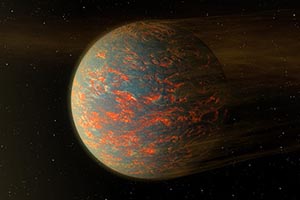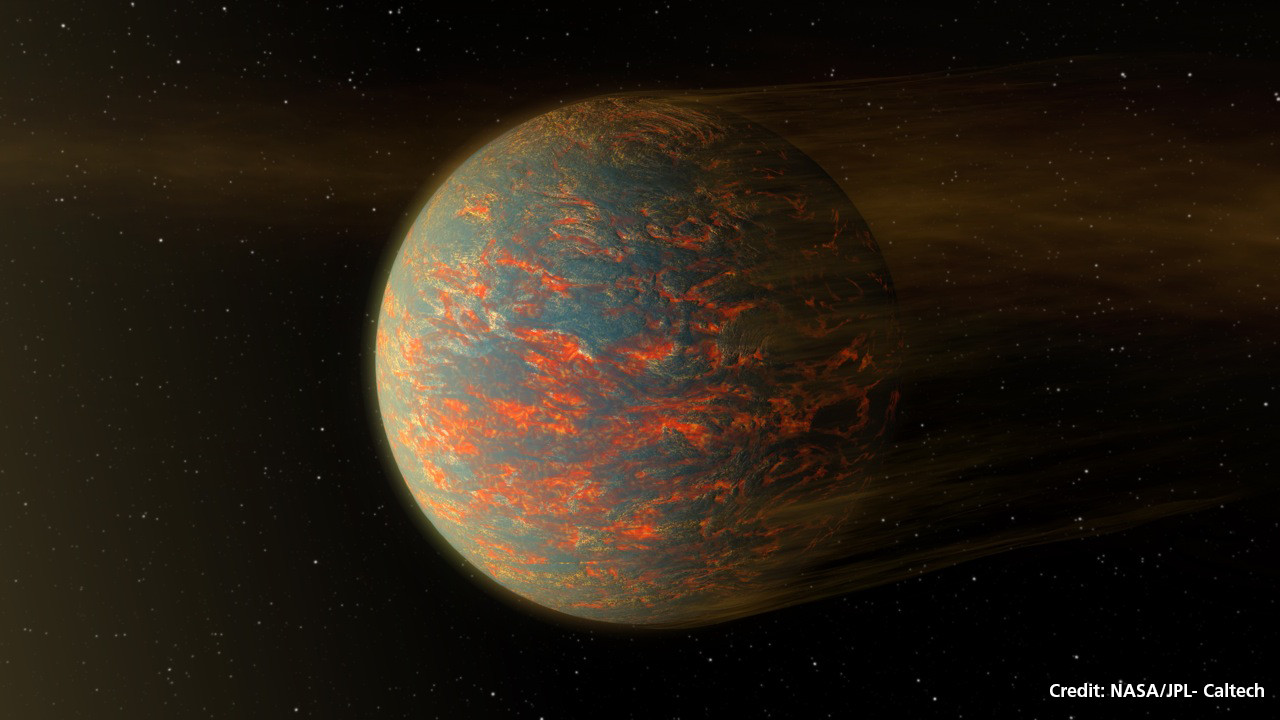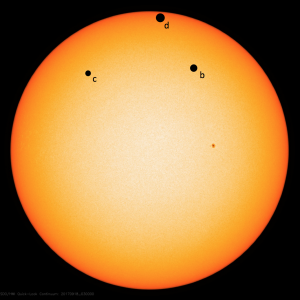Niraula MA ’18, Redfield Lead Team in Discovery of 3 Super-Earths


A team of scientists from Wesleyan, led by Associate Professor of Astronomy Seth Redfield and graduate student Prajwal Niraula MA ’18, has co-authored a paper on the discovery of three planets, or super-Earths, transiting around a nearby star, just 98 light-years away.
“Super-Earths are slightly larger than Earth, and the three of them straddle the divide between the rocky planets like Earth and ice giants like Neptune,” explains Redfield.
These planets were found using the Kepler Space Telescope. “Kepler has found thousands of exoplanets these last eight years, but this is the closest planetary system that Kepler has ever found, although closer planetary systems have been found using different telescopes,” says Redfield.

Redfield supplied a rendering of the team’s discovery (pictured at right). The image represents the clockwork-like repetition of the planetary transits of the three super-Earths. “The points B, C and D represent a possible three-planet transit of the planets GJ9827b, GJ9827c and GJ9827d,” Redfield explains. “If we could see the star like this, the planets would slowly move across the stellar disk over the course of a couple hours.”
Redfield and Niraula submitted their paper to the American Astronomical Society Journals for publication in early September. They simultaneously posted the publications on the Cornell University Library ArXiv shortly before a team of scientists at Harvard posted their finding of the same target, says Redfield.
Niraula, reflecting on the excitement of discovering the system, says the team had encountered false positives before so they were careful to look into it thoroughly. “In the past, it turned out either to be false positives or systematics, which is often the case for an untrained eye working with K2 data,” explains Niraula. “By the time we had found GJ9827, I got better at recognizing false positives. It was interesting when we found a planet in the system, but then on further analysis, we found two more signals. That is when we knew for sure it was a planetary signal, as multiple planetary systems have very small false-positive rates. We were also really excited to find that this is the nearest target to have planets in the K2 campaign.”
“I have been super impressed with how Prajwal has risen to this challenge,” said Redfield. “This will be an impactful paper that will be great for his career.”

